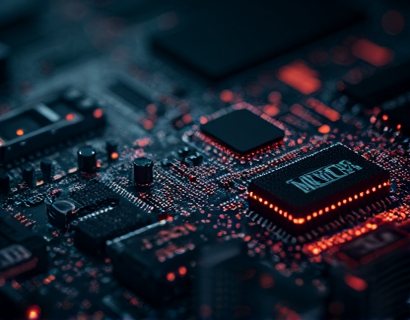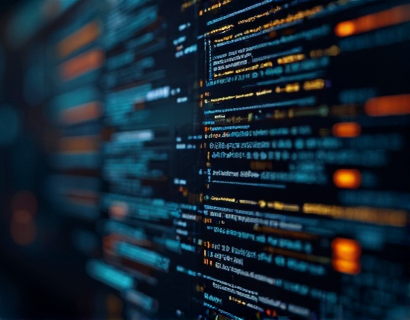Advanced Layer 2 Solutions: Transforming Blockchain Scalability and Developer Efficiency for EVM-Enabled Applications
In the rapidly evolving landscape of blockchain technology, Layer 2 solutions have emerged as a pivotal advancement, particularly for Ethereum Virtual Machine (EVM)-enabled applications. These solutions are designed to enhance scalability, security, and efficiency, addressing some of the most pressing challenges faced by developers and users alike. This article delves into the intricacies of advanced Layer 2 solutions, exploring how they transform EVM-based blockchain development and unlock the potential for the next generation of decentralized applications.
Understanding Layer 2 Solutions
Layer 2 solutions refer to protocols and technologies built on top of existing blockchain networks, or Layer 1, to improve transaction throughput and reduce costs. Unlike Layer 1 upgrades, which involve modifying the core blockchain protocol, Layer 2 solutions operate within the existing framework, leveraging it to achieve greater efficiency. For EVM-enabled applications, these solutions are particularly significant as they enable more complex smart contracts and decentralized applications (dApps) to function smoothly without compromising on security or decentralization.
Key Benefits of Advanced Layer 2 Solutions
One of the primary advantages of advanced Layer 2 solutions is their ability to significantly enhance scalability. By offloading a substantial portion of the transaction processing from the main blockchain to a secondary layer, these solutions can handle thousands of transactions per second, compared to the relatively limited throughput of Layer 1 blockchains. This scalability is crucial for EVM-based applications, which often require high transaction volumes, especially in use cases like decentralized finance (DeFi), gaming, and supply chain management.
Security is another critical aspect where advanced Layer 2 solutions excel. These solutions maintain the security guarantees of the underlying blockchain while introducing additional mechanisms to prevent common vulnerabilities such as front-running and reentrancy attacks. By isolating certain operations off the main chain, Layer 2 solutions reduce the risk of costly and time-consuming attacks, ensuring that EVM-based applications remain robust and trustworthy.
Efficiency is a third pillar of advanced Layer 2 solutions. By reducing the load on the main blockchain, these solutions lower gas fees and decrease confirmation times, making blockchain technology more accessible and user-friendly. For developers, this means faster deployment of dApps and smoother user experiences, which are essential for the widespread adoption of blockchain-based solutions.
Types of Advanced Layer 2 Solutions
Several advanced Layer 2 solutions have gained prominence in the blockchain community, each with its unique approach to enhancing scalability and efficiency. Some of the most notable include state channels, sidechains, and rollups.
State Channels
State channels allow multiple parties to conduct a series of transactions off the main blockchain, with the final state being settled on the chain. This method is particularly effective for applications requiring frequent and small transactions, such as gaming or micropayments. By keeping the majority of transactions off the main chain, state channels minimize gas costs and improve transaction speeds, making them an ideal solution for EVM-based dApps.
Sidechains
Sidechains are independent blockchains that are linked to the main blockchain through two-way pegs. They allow assets to be transferred between the main chain and the sidechain, enabling more flexible and efficient transaction processing. Sidechains can be customized to suit specific use cases, offering tailored solutions for different types of EVM-based applications. This flexibility makes sidechains a versatile option for enhancing scalability and reducing costs.
Rollups
Rollups are one of the most promising Layer 2 solutions, particularly for Ethereum. They come in two main forms: Optimistic Rollups and ZK Rollups. Optimistic Rollups bundle multiple transactions into a single transaction on the main chain, while ZK Rollups use zero-knowledge proofs to bundle and verify transactions off-chain, providing a more secure and faster solution. Both types of rollups significantly increase the transaction capacity of the Ethereum network, making them highly suitable for complex EVM-based applications.
Developer Efficiency and Tooling
Advanced Layer 2 solutions not only benefit end-users but also greatly enhance developer efficiency. By abstracting some of the complexities of blockchain interactions, these solutions allow developers to focus on building innovative dApps rather than dealing with the underlying infrastructure. Several tools and frameworks have been developed to facilitate this process.
For state channels, libraries like Channelize and Ethersource provide developers with the necessary tools to implement and manage state channel transactions seamlessly. These libraries handle the intricacies of channel opening, closing, and state synchronization, simplifying the development process.
For sidechains, platforms like Polygon (formerly Matic) offer robust developer tools and documentation, making it easier to deploy and manage sidechain-based dApps. These tools include wallet integrations, transaction batching, and cost optimization features, which enhance the overall developer experience.
Rollups have also seen significant advancements in developer tooling. Frameworks like OpenZeppelin and Hardhat provide comprehensive support for building and deploying smart contracts on rollup-enabled networks. These frameworks include pre-built contracts, testing environments, and deployment utilities, streamlining the development workflow and reducing the learning curve for new developers.
Case Studies and Real-World Applications
The practical applications of advanced Layer 2 solutions are vast and varied, with numerous successful projects demonstrating their effectiveness. One notable example is the DeFi platform Aave, which has integrated Optimistic Rollups to handle high-volume lending and borrowing operations efficiently. This integration has resulted in lower gas fees and faster transaction times, enhancing the user experience and attracting more users to the platform.
Another example is the gaming platform Axie Infinity, which uses sidechains to manage in-game asset transactions and smart contract interactions. This approach has enabled the platform to scale seamlessly, supporting a large and active community of players while maintaining low transaction costs.
In the supply chain management space, companies like VeChain have leveraged sidechains to create transparent and tamper-proof supply chains. By offloading transaction processing to sidechains, VeChain has achieved significant improvements in transaction speed and cost efficiency, making blockchain technology more accessible for enterprise applications.
Future Prospects and Challenges
The future of advanced Layer 2 solutions is promising, with ongoing research and development aimed at addressing current challenges and unlocking new possibilities. One of the key areas of focus is interoperability, ensuring that different Layer 2 solutions can work seamlessly together across various blockchain networks. This interoperability will be crucial for building a more connected and efficient decentralized ecosystem.
Another challenge is the complexity of implementing and integrating Layer 2 solutions. While tooling has improved, there is still a steep learning curve for developers new to these technologies. Educational resources, community support, and standardized development practices will play a vital role in democratizing access to advanced Layer 2 solutions.
Scalability remains a central theme, with ongoing efforts to further increase transaction throughput and reduce latency. Innovations in sharding, cross-layer optimization, and advanced cryptographic techniques are expected to push the boundaries of what is possible with Layer 2 solutions.
Conclusion
Advanced Layer 2 solutions are revolutionizing the landscape of EVM-enabled blockchain applications, offering unparalleled scalability, security, and efficiency. By offloading transaction processing and introducing innovative mechanisms, these solutions enable developers to build more complex and user-friendly dApps. As the technology continues to evolve, the potential for decentralized applications to transform various industries becomes increasingly tangible. Embracing advanced Layer 2 solutions is not just an option but a necessity for anyone looking to stay ahead in the blockchain revolution.










































